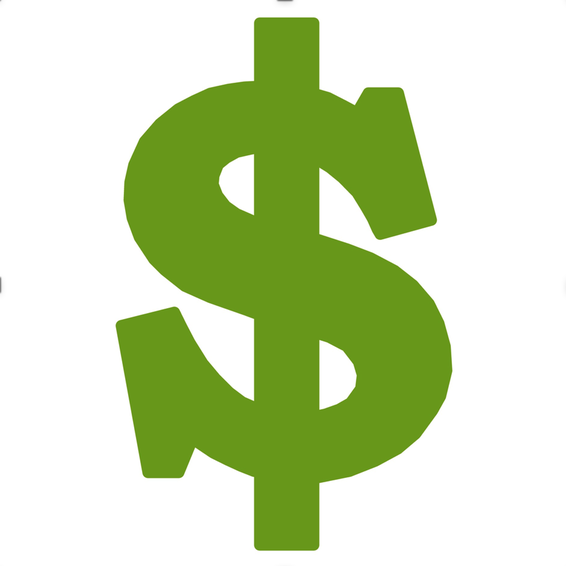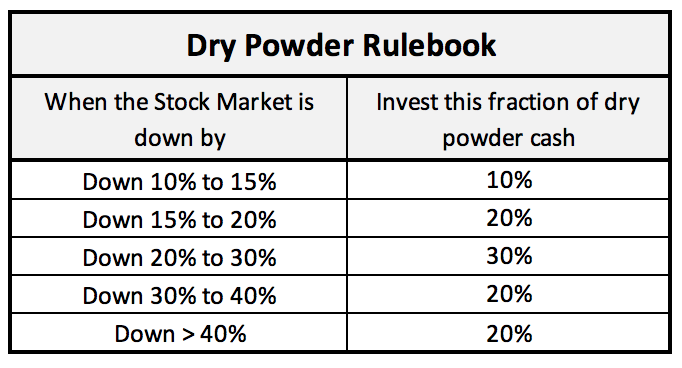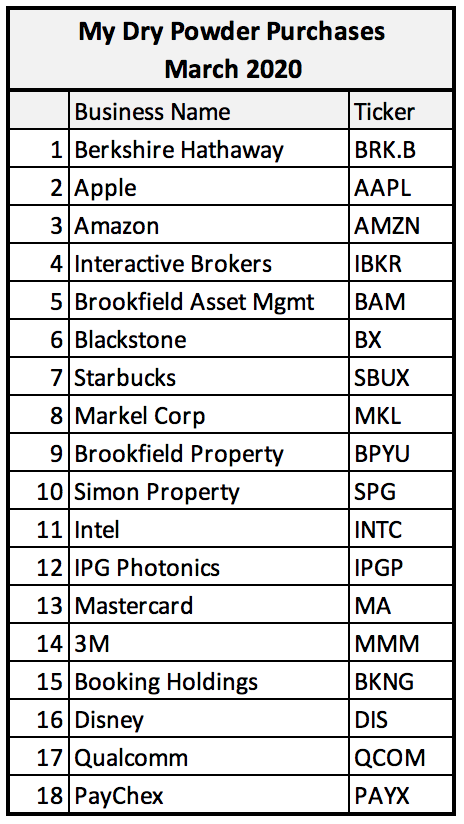
Two weeks ago, I wrote that I have bought (or sold) very little in my stock portfolio in past twelve months. But that changed rather quickly in last two weeks. The stock market had been worried about the COVID-19 pandemic for a few weeks. But then on February 27, it dropped 10% below the 52-week high. And then the oil price dropped. Fear of a recession caused by economic slowdown took over the market. It dropped by 15%, then 20% and then down to 27% last Thursday before recovering on Friday. Today, it again dropped, taking the S&P 500 index close to 30% below its peak.
Amid the ensuing panic, I started buying stocks. It was the right thing to do. I was just following this timeless precept from Warren Buffett:
“We simply attempt to be fearful when others are greedy and to be greedy only when others are fearful.”
He wrote this in Berkshire Hathaway’s annual letter in 1986. As an aside, in that letter, he called fear and greed “two super-contagious epidemics” that frequently occur in the investment community. A bit ironic metaphor given that we are dealing with a real pandemic today!
I try to keep my emotions in check when it comes to investing. To help with this I have my so-called dry powder strategy. I keep cash on the sidelines for market drops like these. But rather than try to figure out when the market would reach bottom, I deploy a tranche of cash as stocks drop below a certain level. It doesn’t matter to me if the market has further to fall. Or that it might not recover any time soon. If the market would continue to drop, I’d use more of my cash to buy stocks—albeit gradually as my purchases follow a strict threshold-driven rulebook.
Check out this table. You can also see my other posts on dry powder investing here.

This approach frees me from getting bogged down by market fluctuations. I am no longer concerned about when and how: When to buy and how much to buy. I just dutifully follow my rulebook.
As things stand today (Monday, March 16th), I have fully invested the first three tranches of dry powder cash into stocks: 10%, 20%, and 30%. So 60% of my cash is deployed.
In times like these when many things are happening quickly and simultaneously (stocks dropping, oil falling, pandemic fears abound), it is a blessing that I could keep it simple and just focus on one question: What to buy? Today my number one job is to identify stocks that are good value.
Over the weekend, I read a blog post from John Huber of Saber Capital Management. John writes well and he’s an astute observer of the stock market. He also believes that for long-term investors, this is an opportunity to invest, not to divest off our holdings. Check out his blog post here.
“Some investors are in fact panic selling out of fear, others are more rationally selling because they don’t want to own a business that will have a bad year. And this creates opportunities for those who want to buy a stake in companies as a long-term part-owner.”
This is how I also think about my stock purchases. Today I am happy to buy good businesses and keep them for the long haul.
What did I buy so far? See this table:

Most of these companies are not new to me. I already own shares in many of them. With this dry powder investing, I’ve added to my existing positions. I have written about several of these companies in previous blog posts. Some of these, I hadn’t bought in a long while. Last I bought Markel was in December 2014. Mastercard in September 2014 and PayChex in October 2011. Others, I had bought some in December 2018 when stocks fell below 15%.
There are also two new names in this group: Booking Holdings (BKNG) and Brookfield Asset Management (BAM). Both are durable and market leading franchises in their respective industries. I had my eye on these two companies for a while. I wrote briefly about BAM in a July post on my real-estate investing. BKNG is the world’s largest online travel agency. BAM is a leading asset manager known for its real estate, infrastructure, and private equity operations.
Circling back to Mr. Buffett, his company had $128 billion cash in its coffers, as of the fourth quarter report. At the time, he said he’s looking out for compelling investments but in no rush to invest the cash quickly. While we won’t know this for sure until the 1Q 2020 report is out in May, I’d bet that he’s also taking advantage of this market panic and putting the company cash to good use. We don’t know what he might be buying today but we all can follow him in spirit and buy stakes in good businesses that are selling at hefty discounts. This is what I have been doing in last two weeks.
Leave a Reply